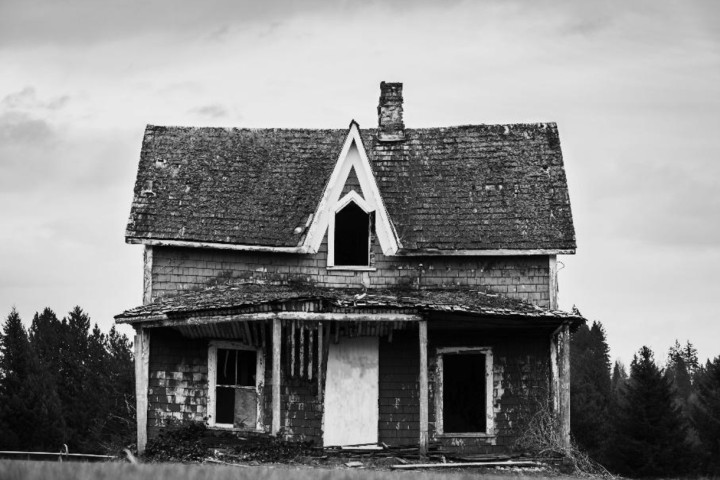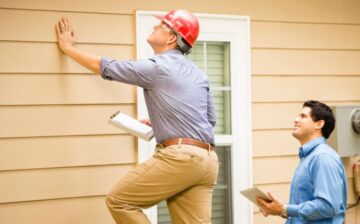A roof failure can strike without warning, leaving homeowners scrambling to protect their property and minimize damage. This sudden crisis often arises from extreme weather, poor maintenance, or hidden structural weaknesses, leaving homes exposed to the elements.
A failing roof is more than just a nuisance; it can disrupt your daily life, compromise your home’s safety, and lead to significant financial costs if not addressed promptly.
Handling an unexpected roof failure requires quick thinking and a clear plan of action. From assessing the severity of the problem to coordinating repairs, understanding the steps to take can make all the difference in protecting your home and avoiding further damage.
This guide will walk you through what to do when your roof fails, providing practical solutions to navigate this challenging situation with confidence.
Identifying the Severity of the Problem
When your roof fails, the first step is to assess how serious the damage is. Determining the severity helps prioritize your next steps and decide whether immediate action is required. Common signs of roof failure include:
- Water dripping or pooling inside your home
- Missing shingles, especially after a storm
- Structural sagging or bowing in the roofline
- Stains or discoloration on walls or ceilings
It’s essential to resist the urge to climb onto the roof yourself, as it may be dangerous. Instead, inspect from the ground or a safe vantage point to gauge the extent of the problem. Take photos of any visible damage to document the issue for insurance claims or repair consultations.
Acting Fast: Bringing in Emergency Help
In situations where water intrusion or structural instability is evident, immediate action is necessary. Roof damage can worsen rapidly, leading to mold, compromised ceilings, and further structural issues. To address these problems effectively, hire an emergency roof leak repair service to assess and stabilize your roof.
Emergency services can provide temporary solutions, such as tarping the damaged areas, to stop leaks and prevent further harm until permanent repairs can be made. When choosing a service provider, ensure they are licensed and experienced in handling urgent repairs. This quick intervention can prevent thousands of dollars in damage and reduce the stress of navigating a roofing emergency.
Protecting Your Home’s Interior
While waiting for professional help, take steps to minimize interior damage. Water leaks are one of the most common issues during roof failures, and addressing them quickly is critical. Begin by:
- Moving furniture, electronics, and valuables out of harm’s way
- Using buckets, plastic sheeting, or towels to collect and block water
- Drying wet areas promptly to prevent mold and mildew growth
Focus on containing the problem rather than attempting to fix it yourself. A temporary patch or covering may hold for a short time, but professional intervention is necessary to address the underlying issue and ensure long-term protection.
Filing an Insurance Claim
Roof repairs can be costly, but homeowners’ insurance often covers roof damage caused by storms, accidents, or other sudden events. Filing a claim is a crucial step in offsetting repair costs. Here’s how to handle the process:
- Document the Damage: Take detailed photos and videos of the affected areas, both inside and outside your home.
- Review Your Policy: Understand what your policy covers and any exclusions related to roof damage.
- Consult a Professional: Have the emergency roof repair service provide an assessment or estimate, which you can include in your claim.
- Submit Your Claim: Provide your insurer with all necessary documentation and follow their instructions to expedite the process.
Some policies may not cover damage caused by wear and tear or neglect, so it’s essential to maintain your roof and keep records of past inspections and repairs.
Exploring Repair and Replacement Options
Once the immediate crisis has been addressed, it’s time to decide on a long-term solution. The right approach depends on factors like the roof’s age, the extent of the damage, and your budget. Consider the following options:
- Repairs: If the damage is limited to a small area, repairing only the affected section may be a practical and cost-effective solution.
- Full Replacement: For older roofs nearing the end of their lifespan, a complete replacement may be the best long-term investment.
- Upgrading Materials: If replacing your roof, consider more durable or energy-efficient materials to enhance your home’s protection and performance.
Consult a reputable roofing contractor to evaluate your options and help you make an informed decision.
Preventing Future Roof Failures
After resolving the current issue, focus on preventive measures to avoid future roof failures. Regular maintenance can significantly extend the lifespan of your roof and reduce the risk of sudden problems. Key steps include:
- Cleaning gutters and downspouts to prevent water buildup
- Inspecting shingles for damage after severe weather
- Trimming overhanging branches that could damage the roof
- Scheduling annual professional roof inspections
By staying proactive, you can address minor issues before they escalate into costly emergencies.
Finding the Right Roofing Professional
Choosing the right contractor is critical for both emergency and long-term roof solutions. Look for contractors with:
- Proper licensing and insurance
- Positive reviews and references from past clients
- Transparent pricing and detailed estimates
A qualified professional will not only fix the damage but also provide valuable guidance on maintaining your roof’s condition. Building a relationship with a reliable contractor ensures you’re prepared for any future roofing challenges.
All in all, an unexpected roof failure can be a daunting experience, but with the right approach, you can protect your home and minimize the impact. From hiring professionals for emergency repairs to taking steps to safeguard your interior, every action plays a vital role in managing the crisis. Address the issue promptly, document everything for insurance purposes, and plan for long-term solutions to restore your roof’s integrity.
For homeowners, knowing how to navigate this challenging situation ensures peace of mind and a swift resolution. Taking these steps will help you safeguard your home and reduce the risks associated with unexpected roof failures.
We hope you found this blog post on What to Do When Your Roof Fails Unexpectedly In Your Home, useful. Be sure to check out our post on Roof Maintenance Tips To Extend the Life Of Your Roof for more great tips!
Have Experience in the Moving Industry? Want an Additional Income Stream? Work With All Around Moving!
Earn a commission from all the moving jobs you book with us. Partner with us and we’ll help you profit. Profit as a moving consultant under our moving umbrella and earn 50/50% commission. Click here to learn more.






